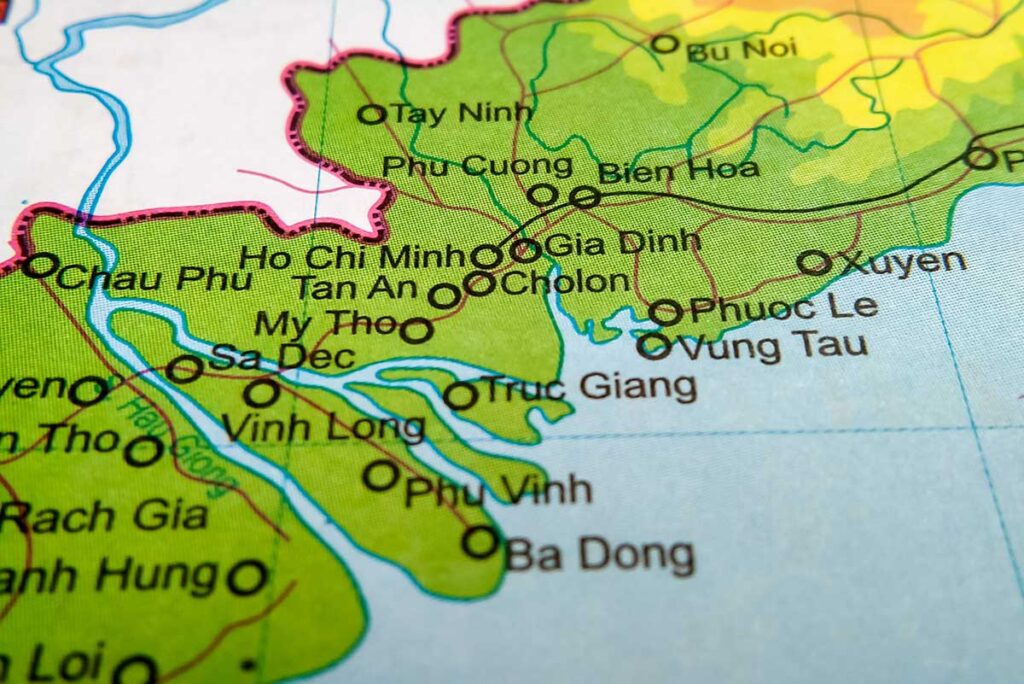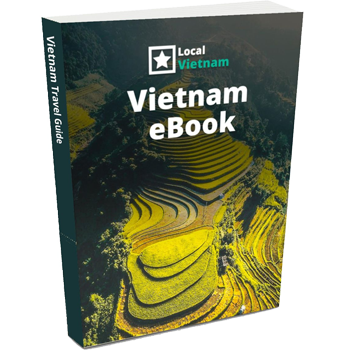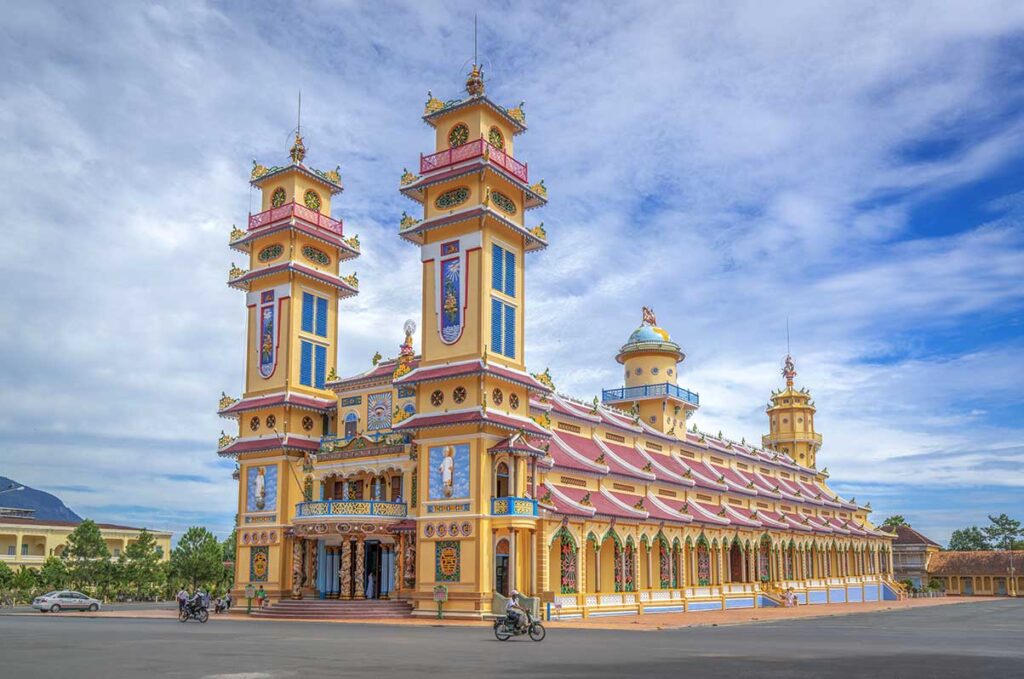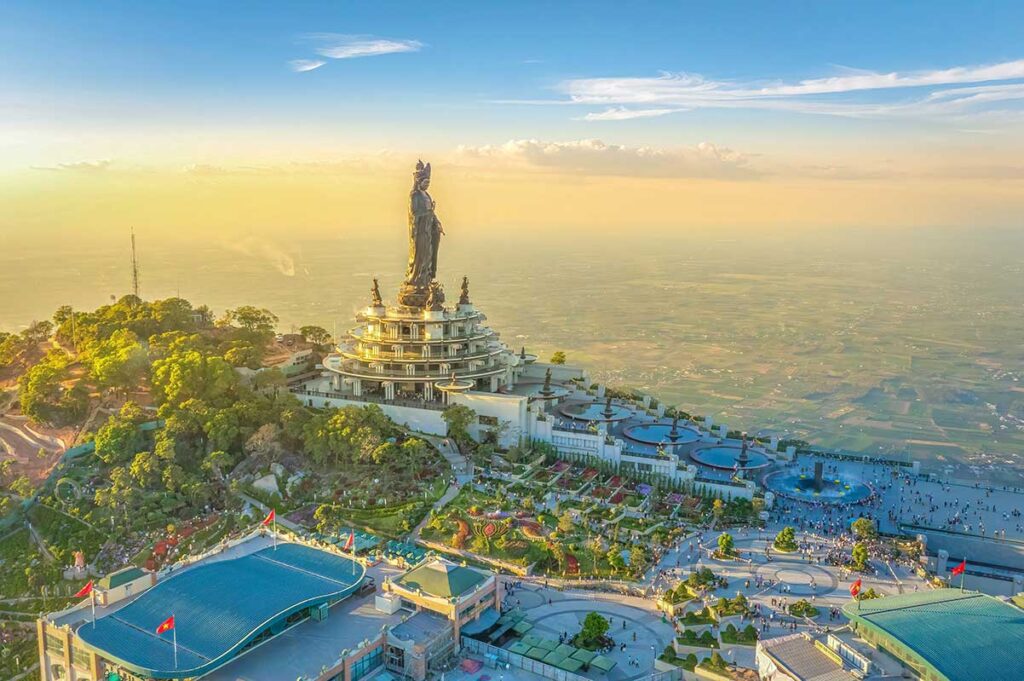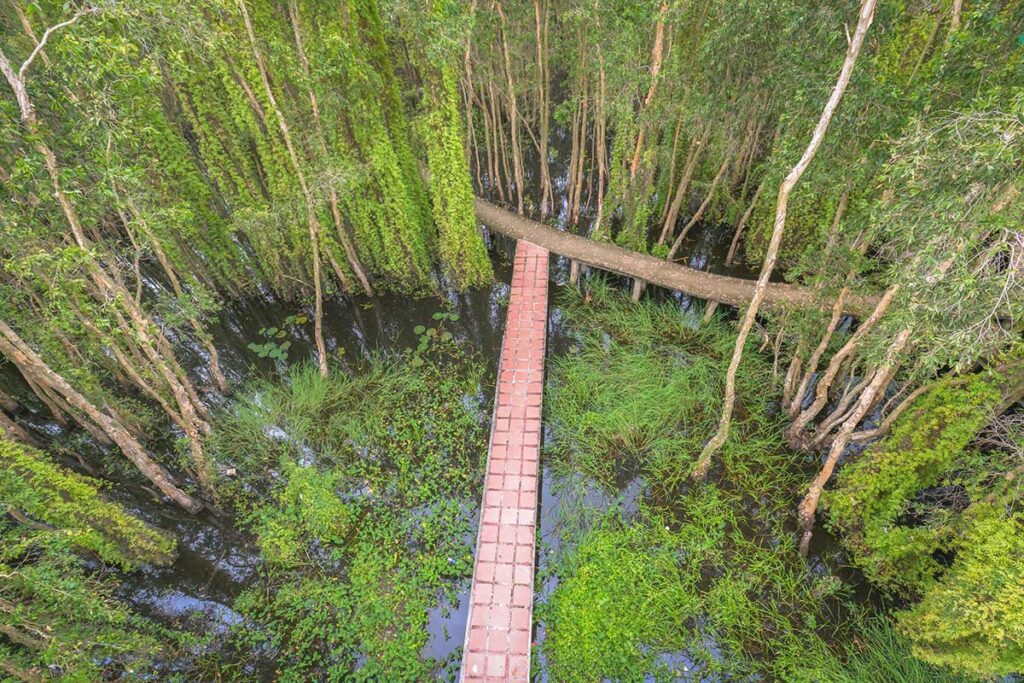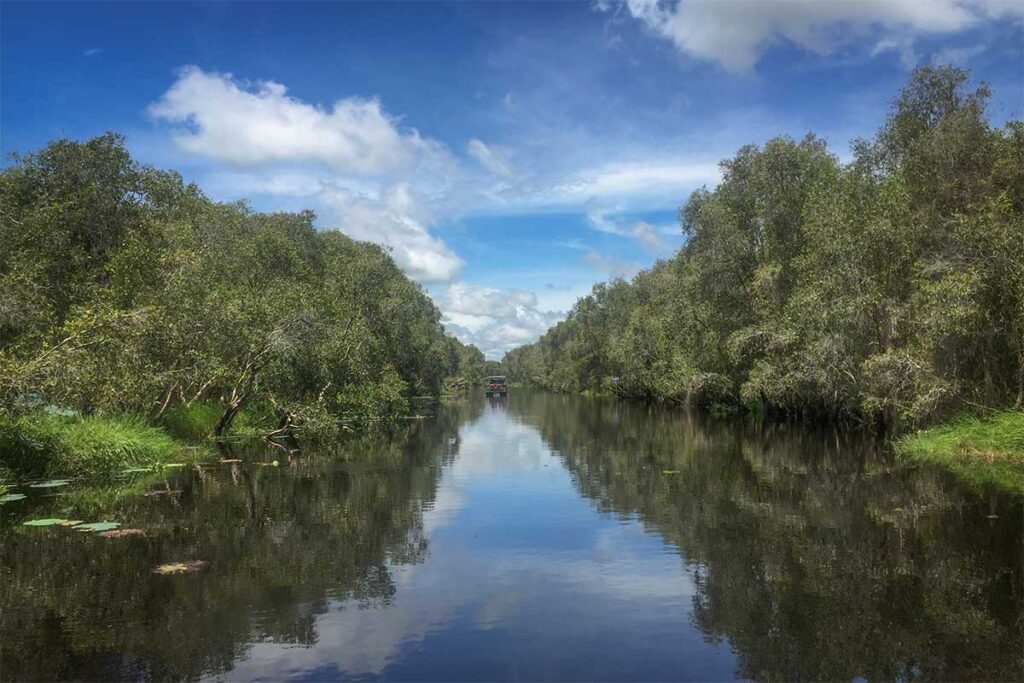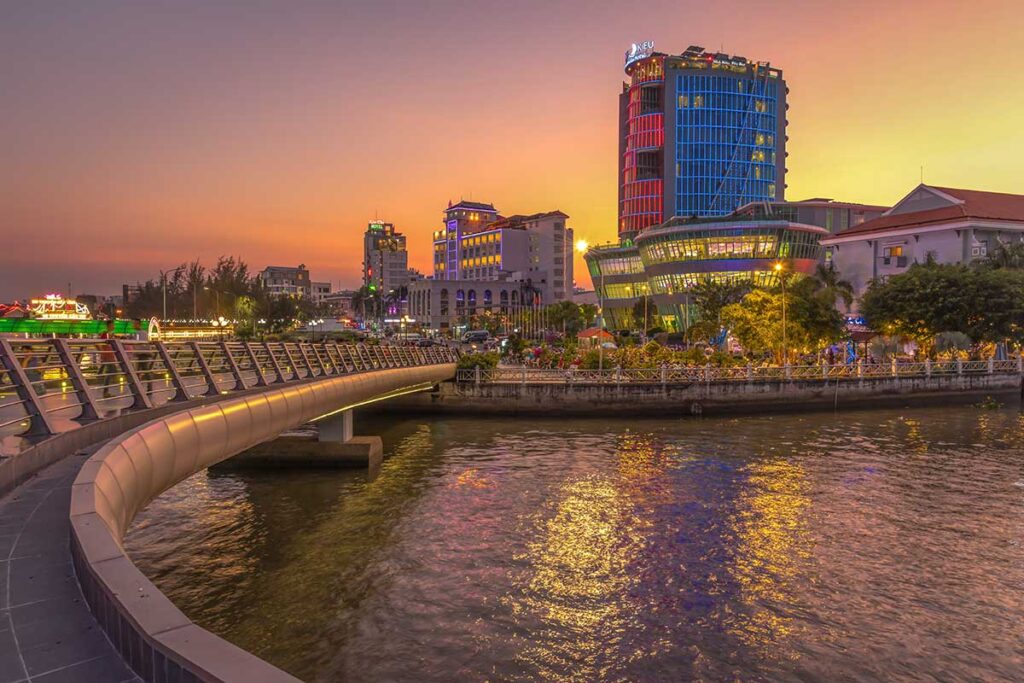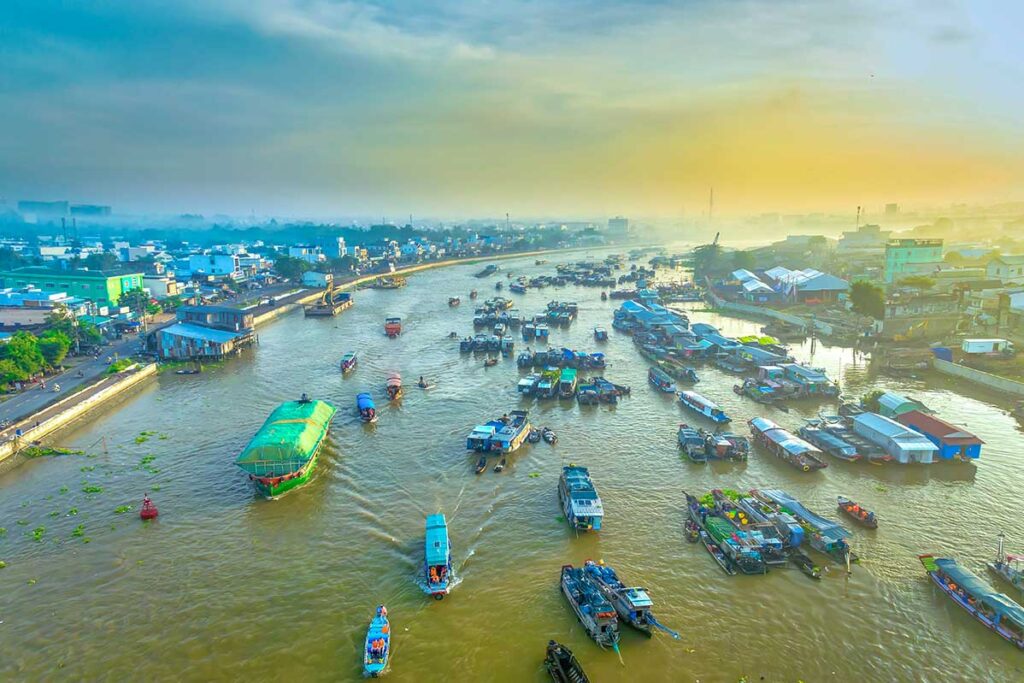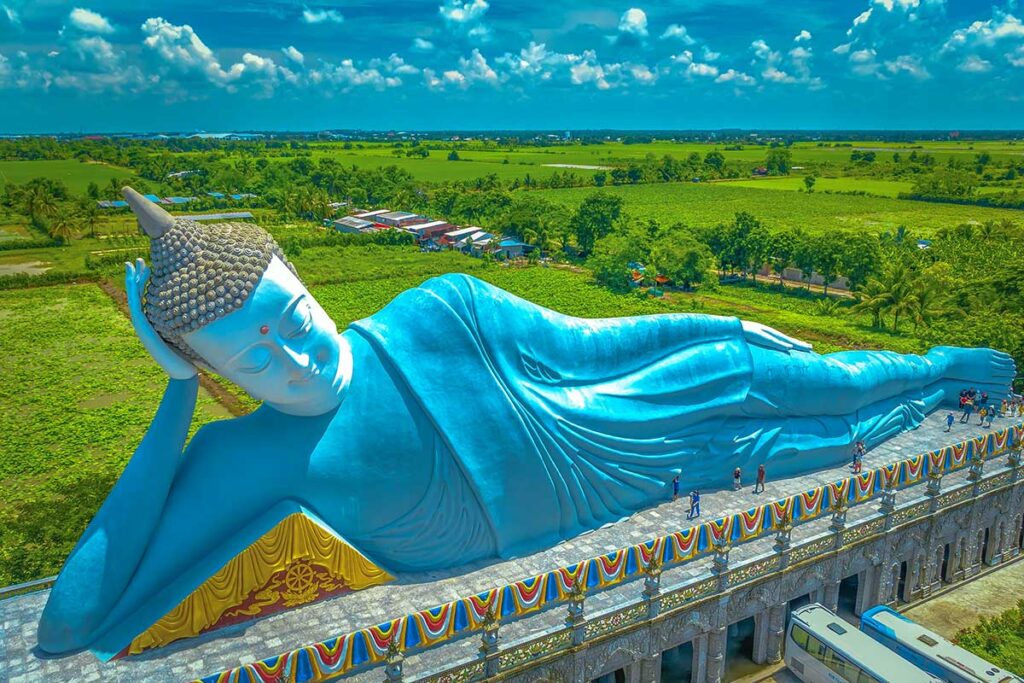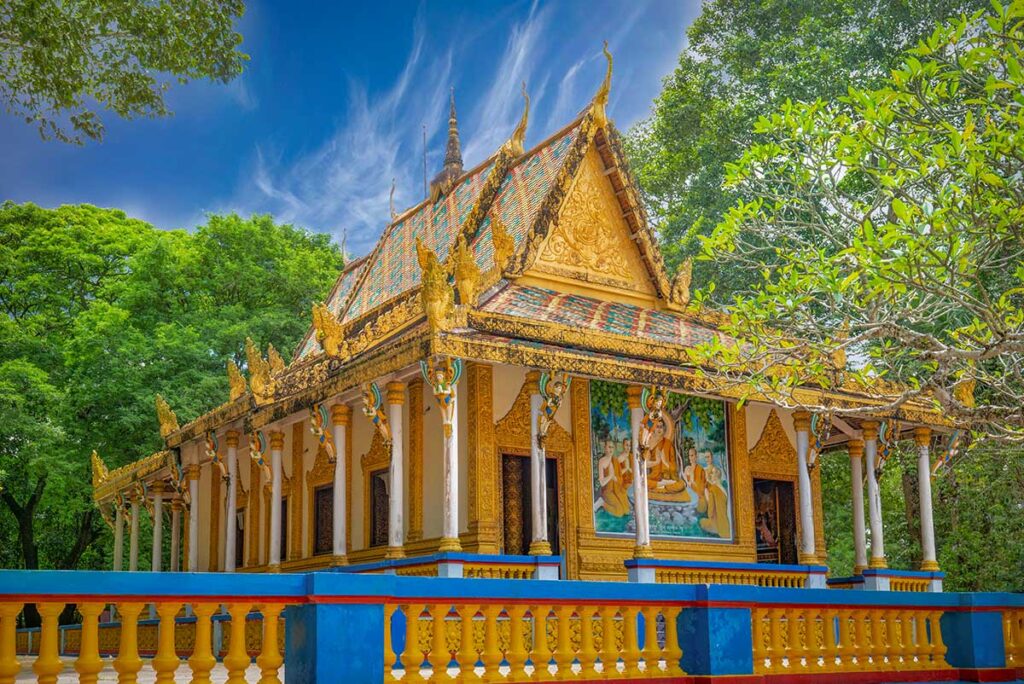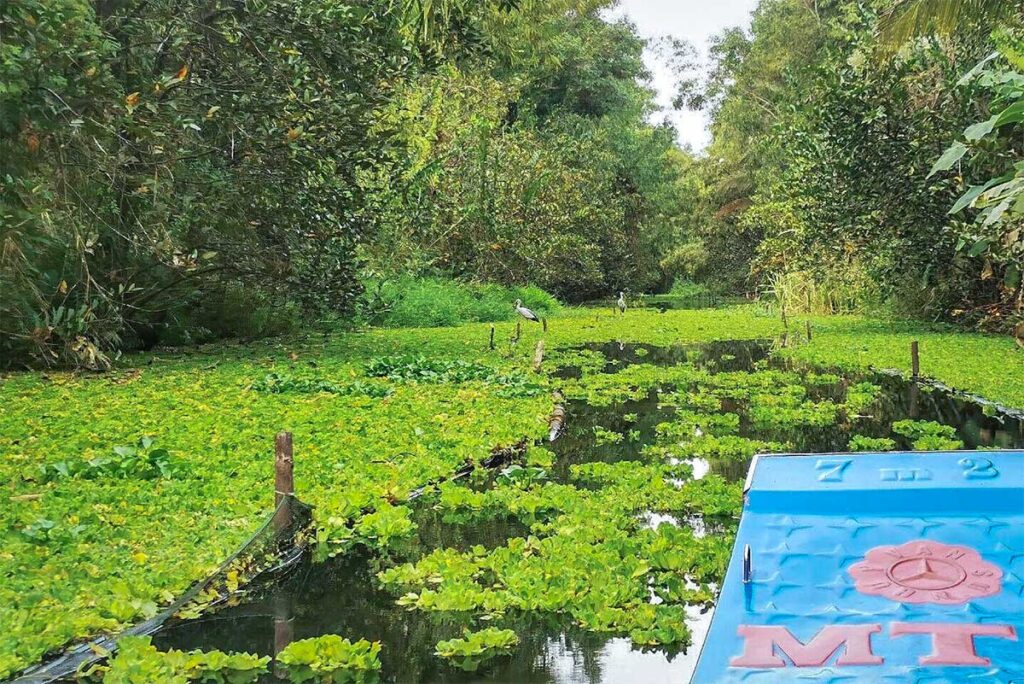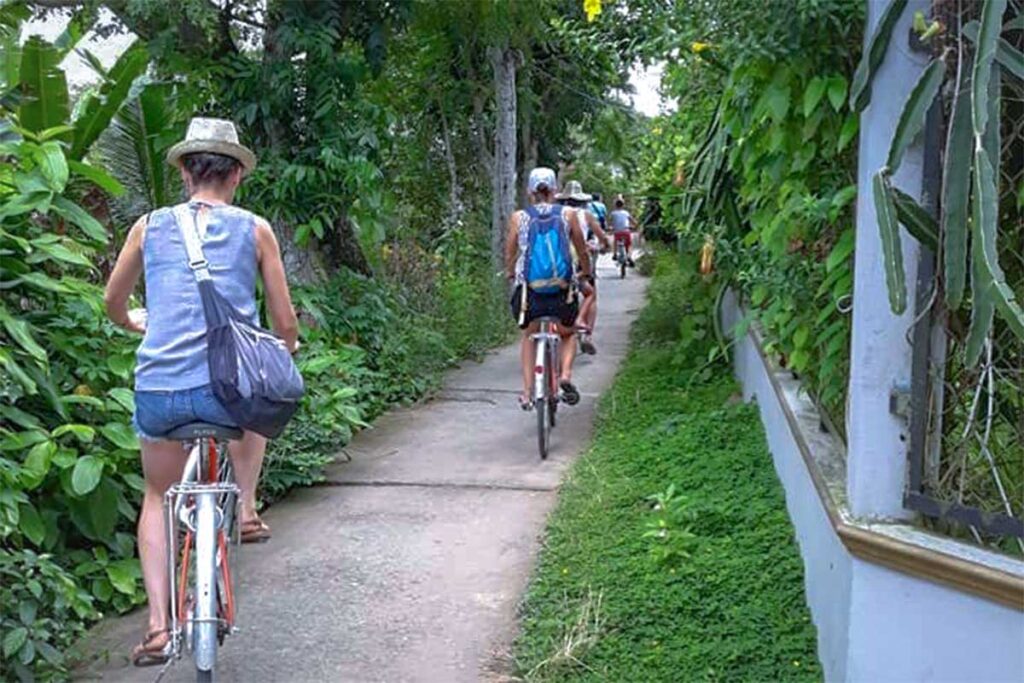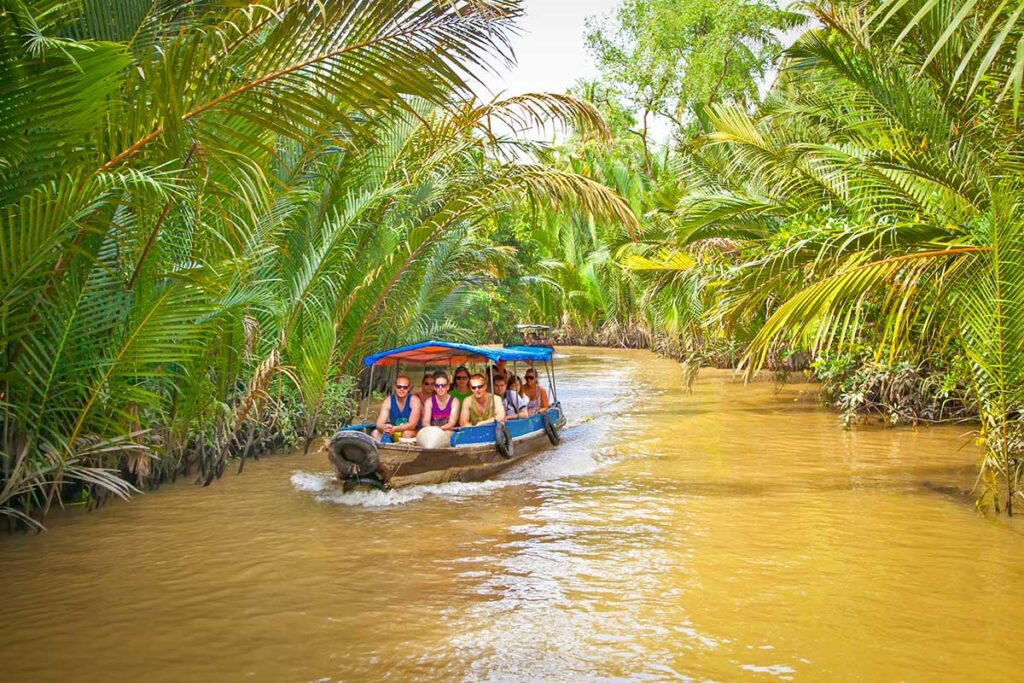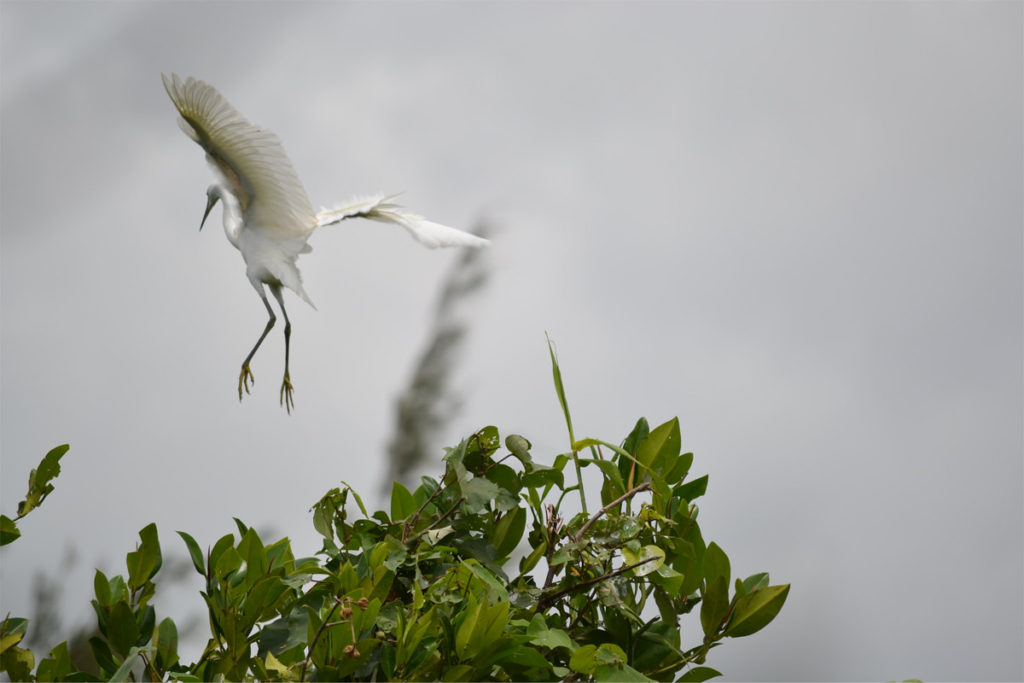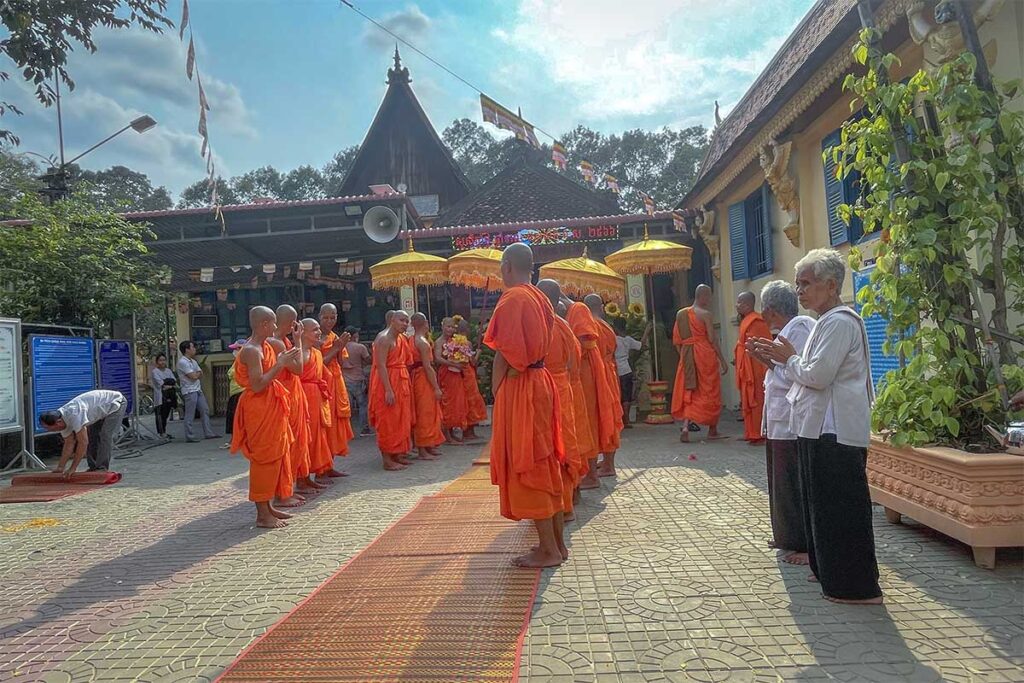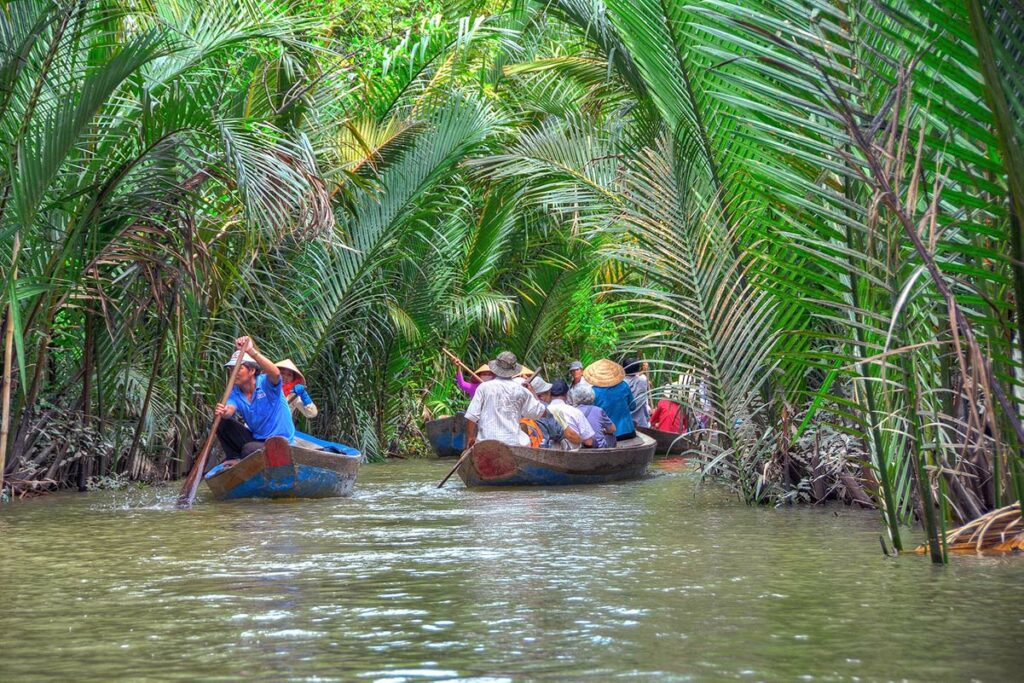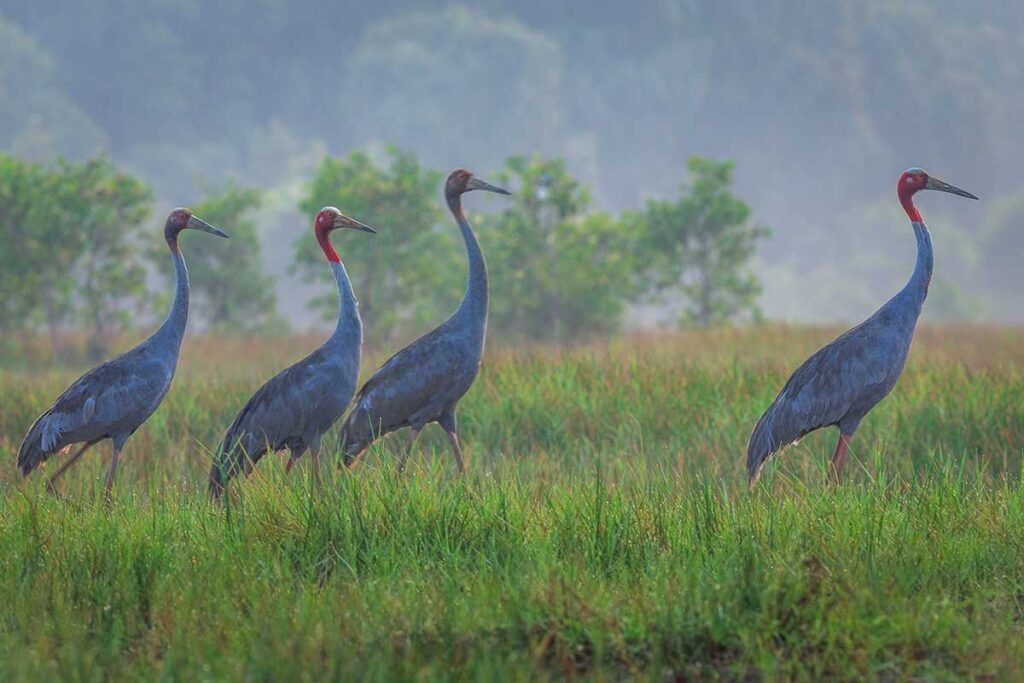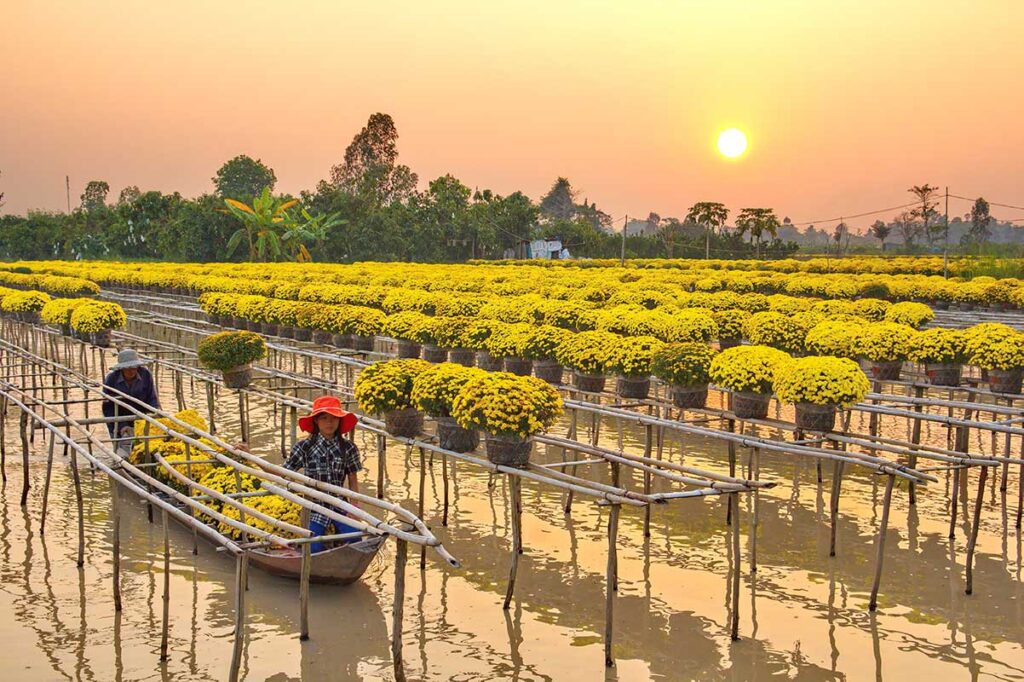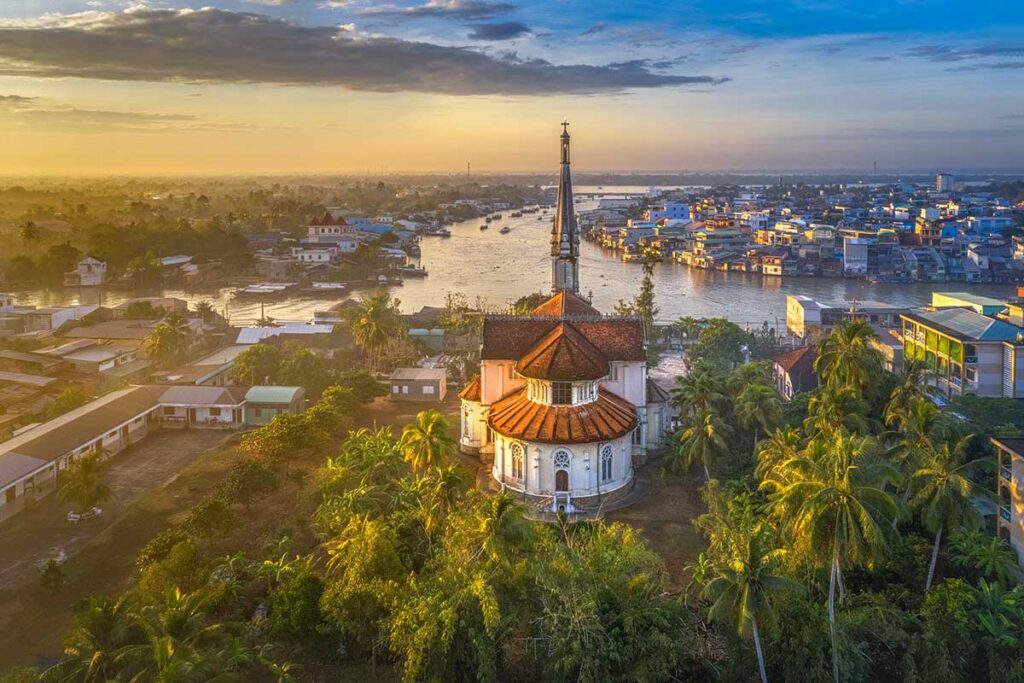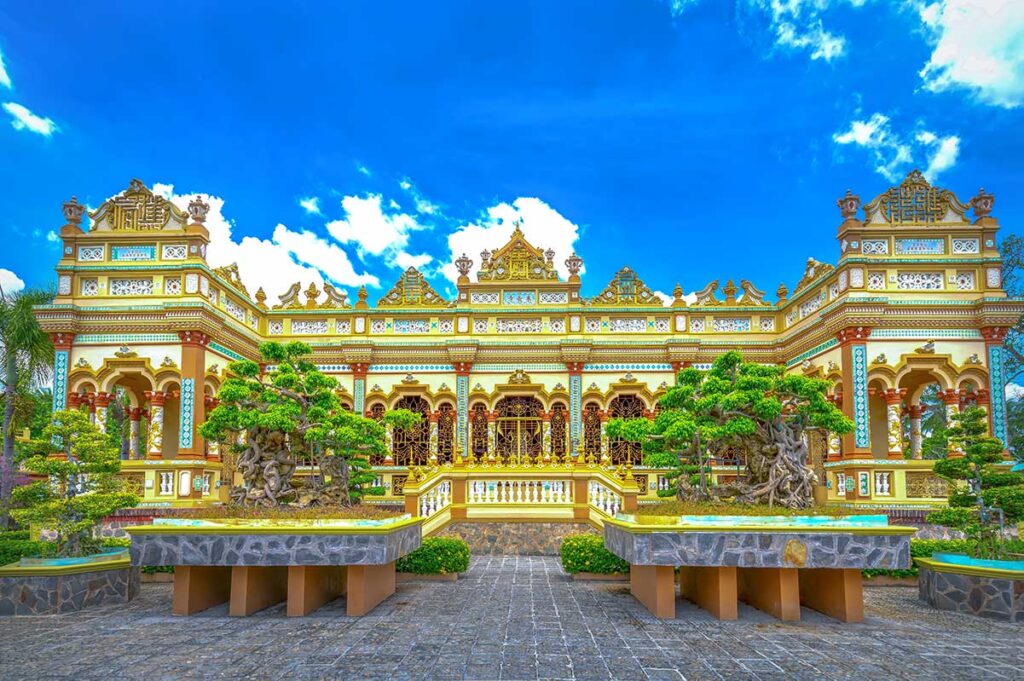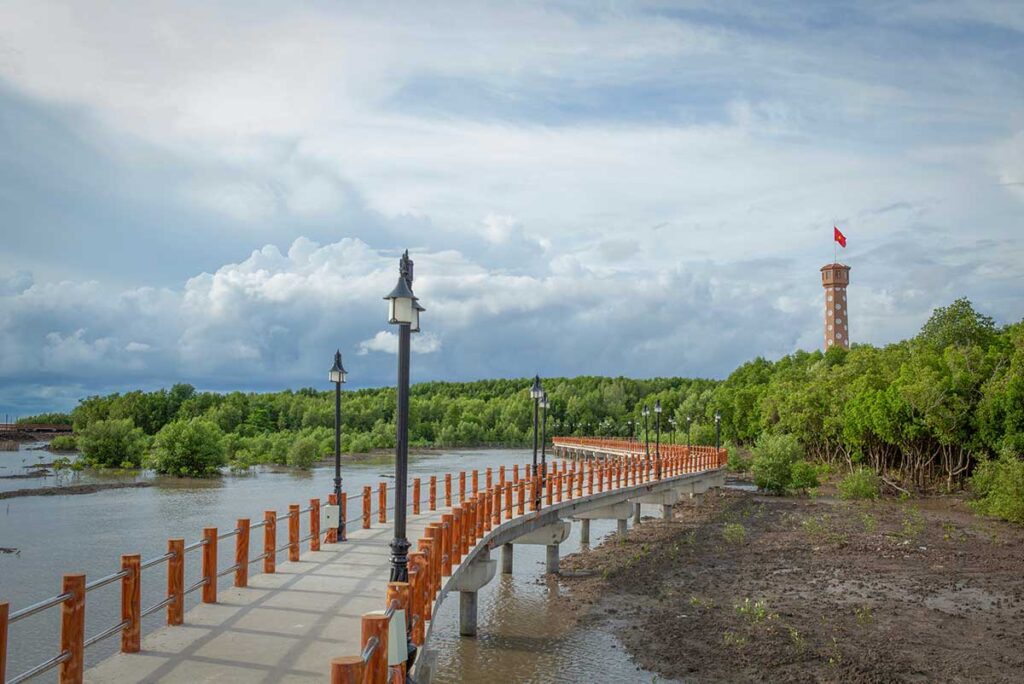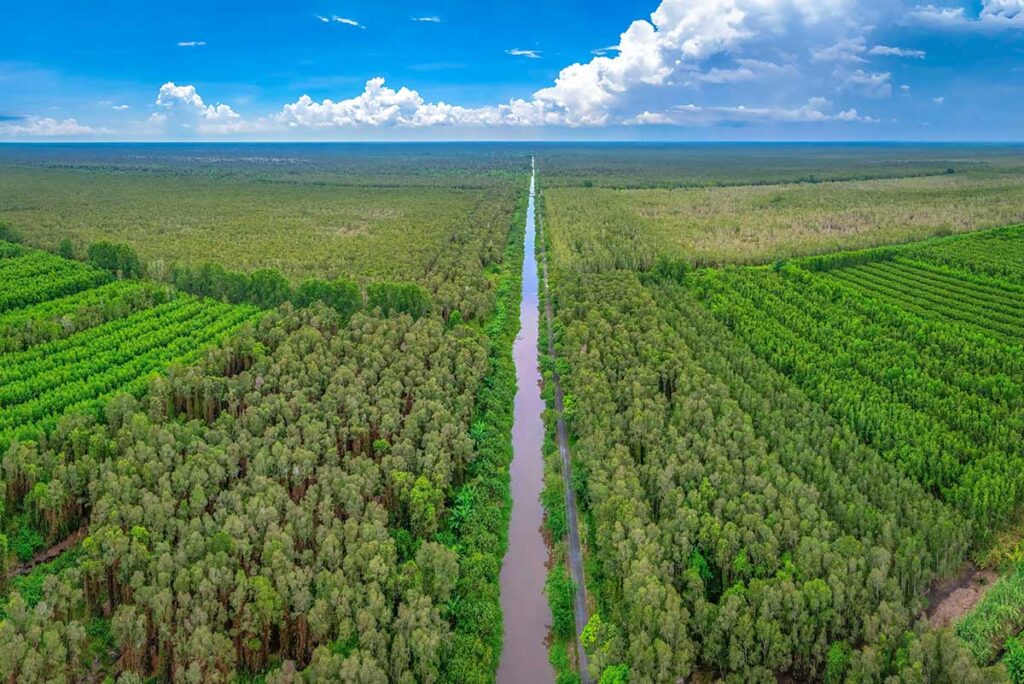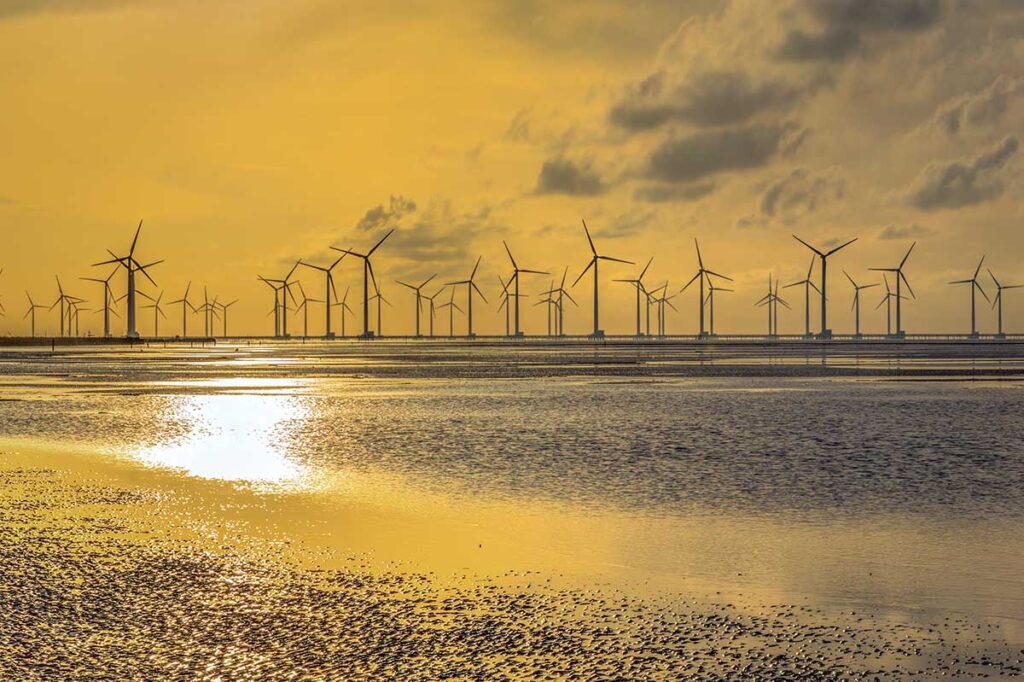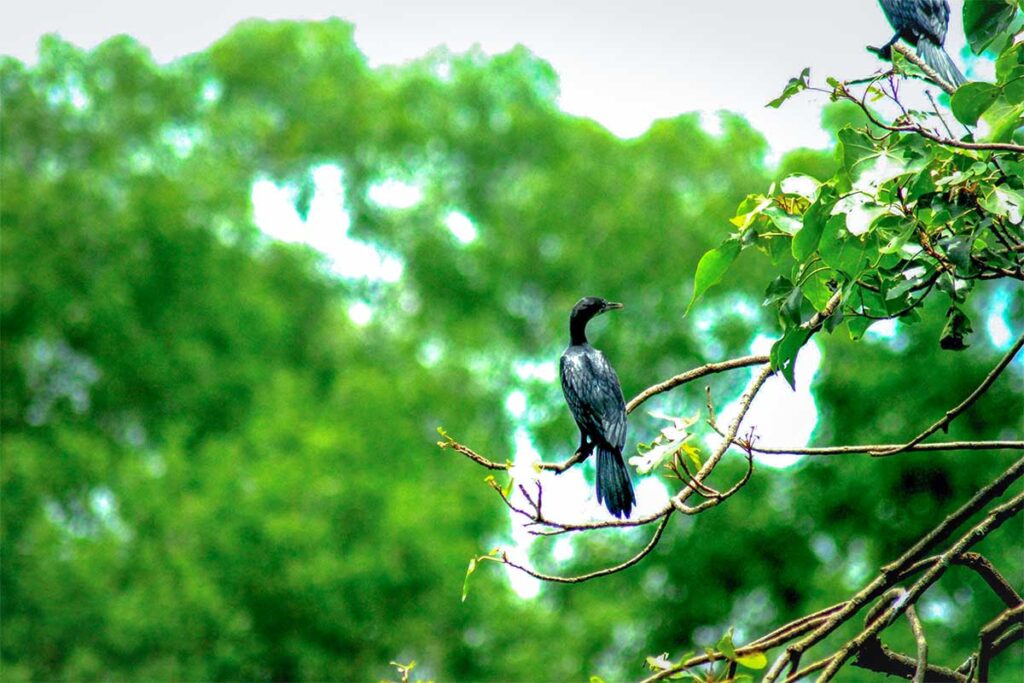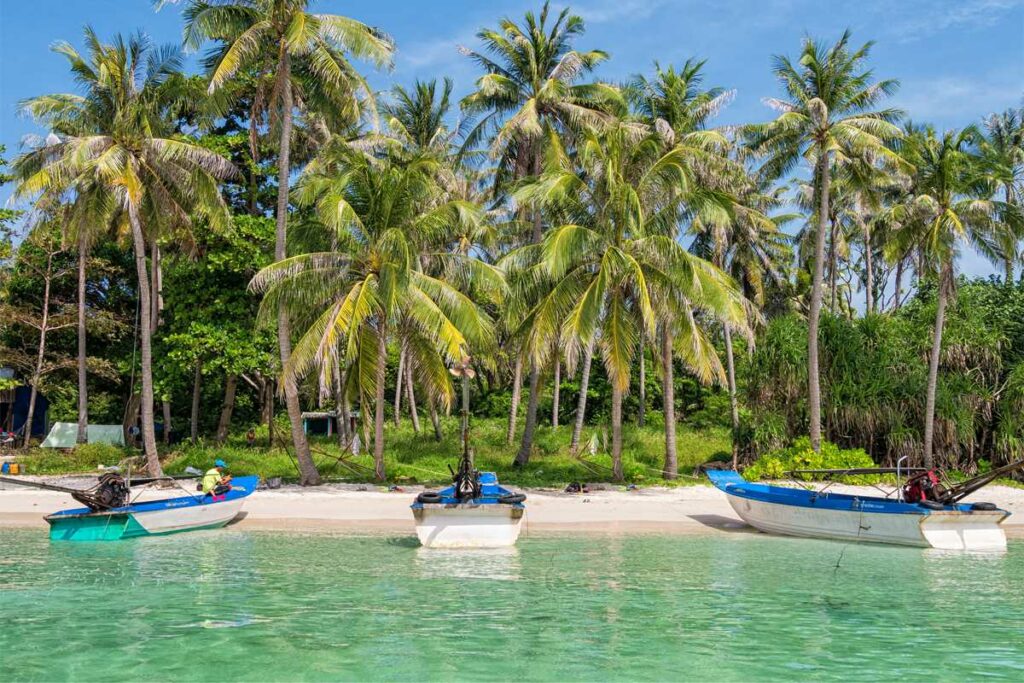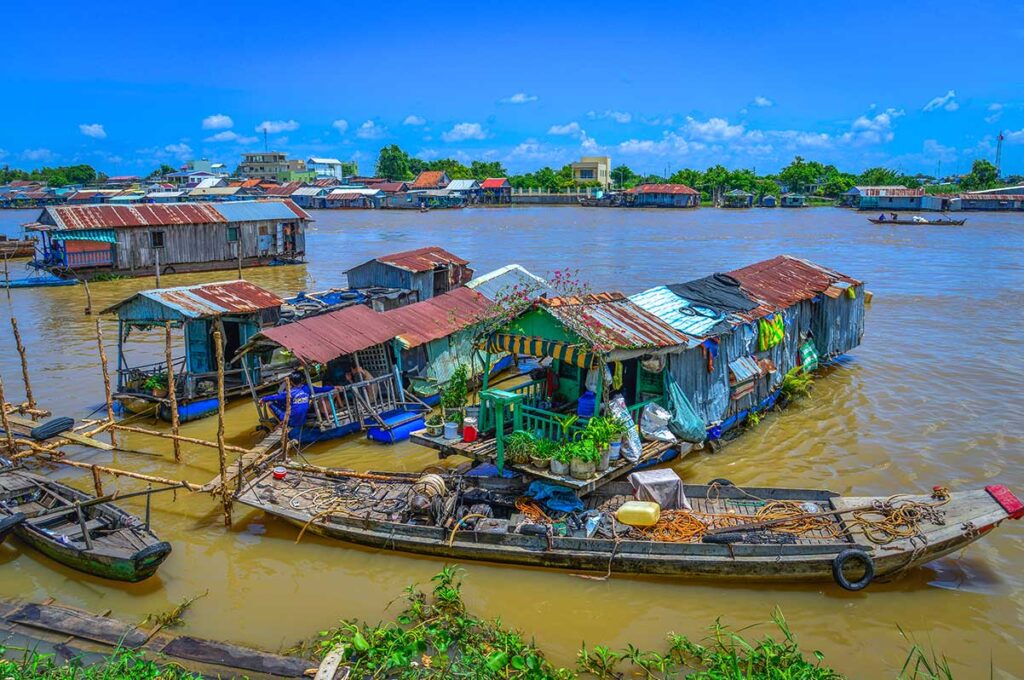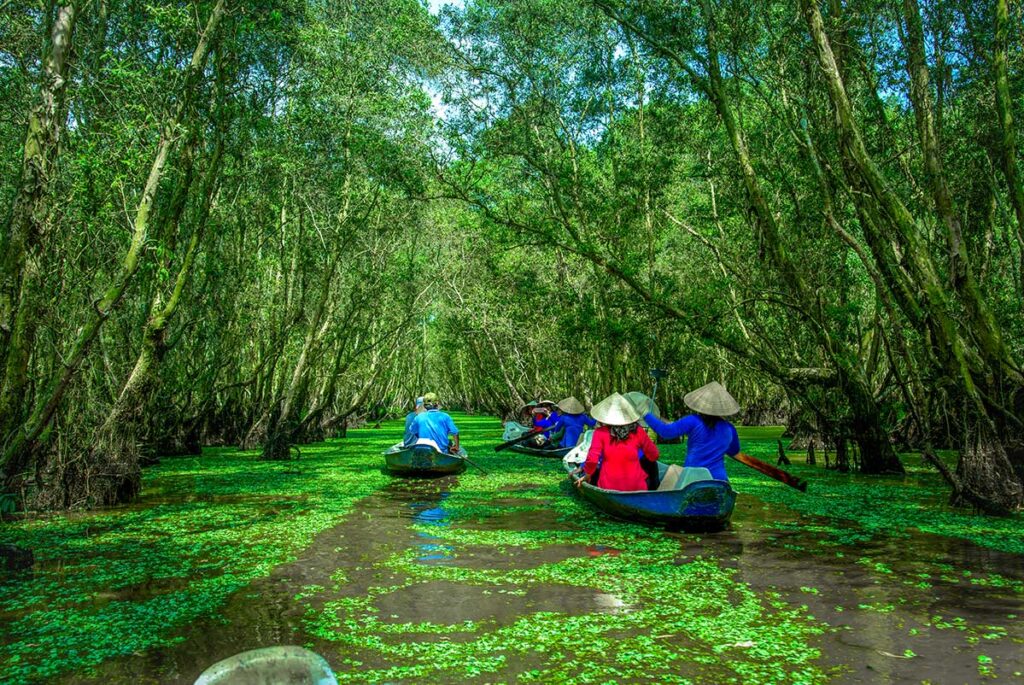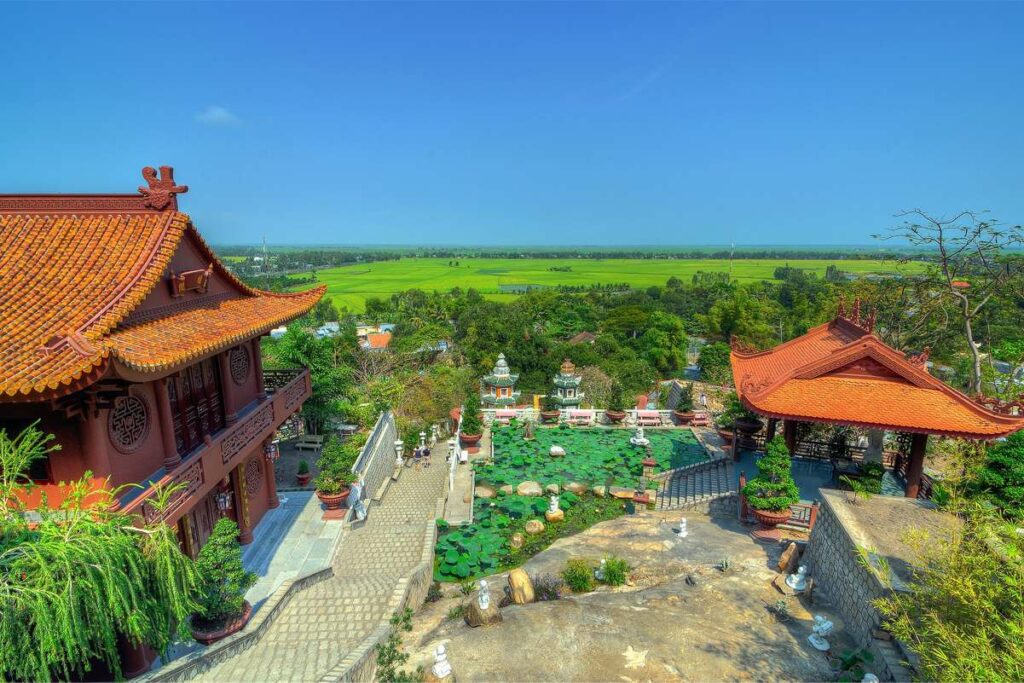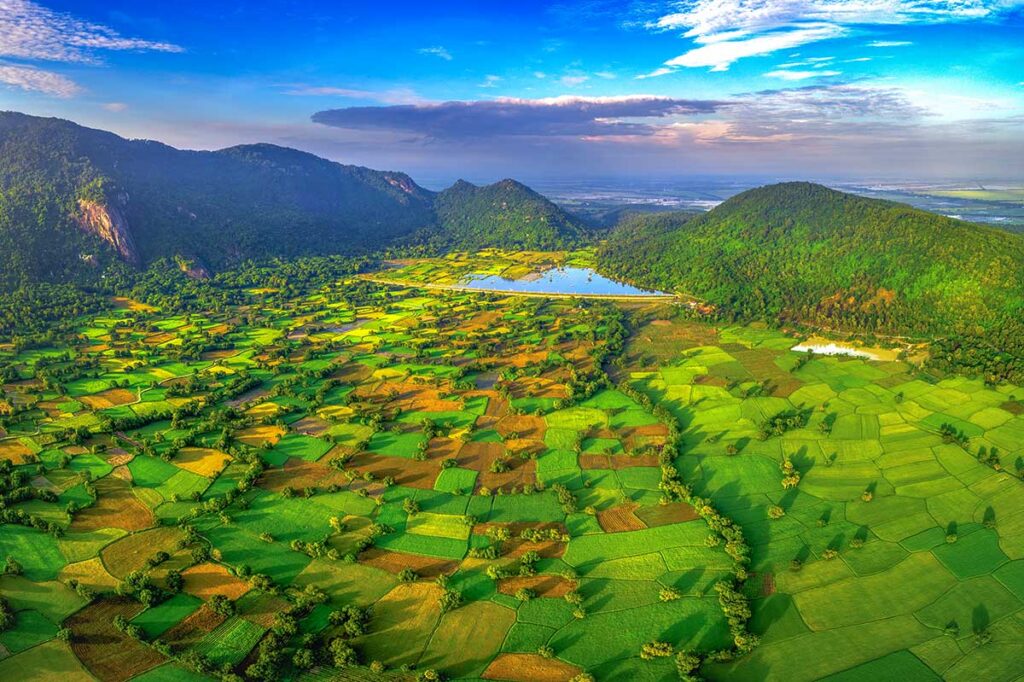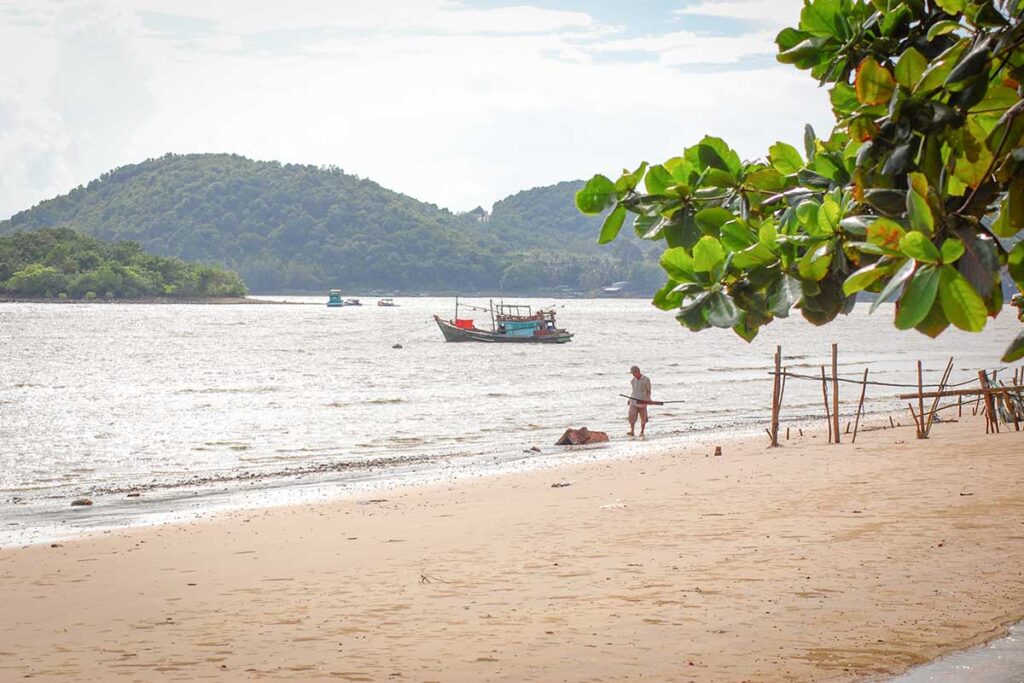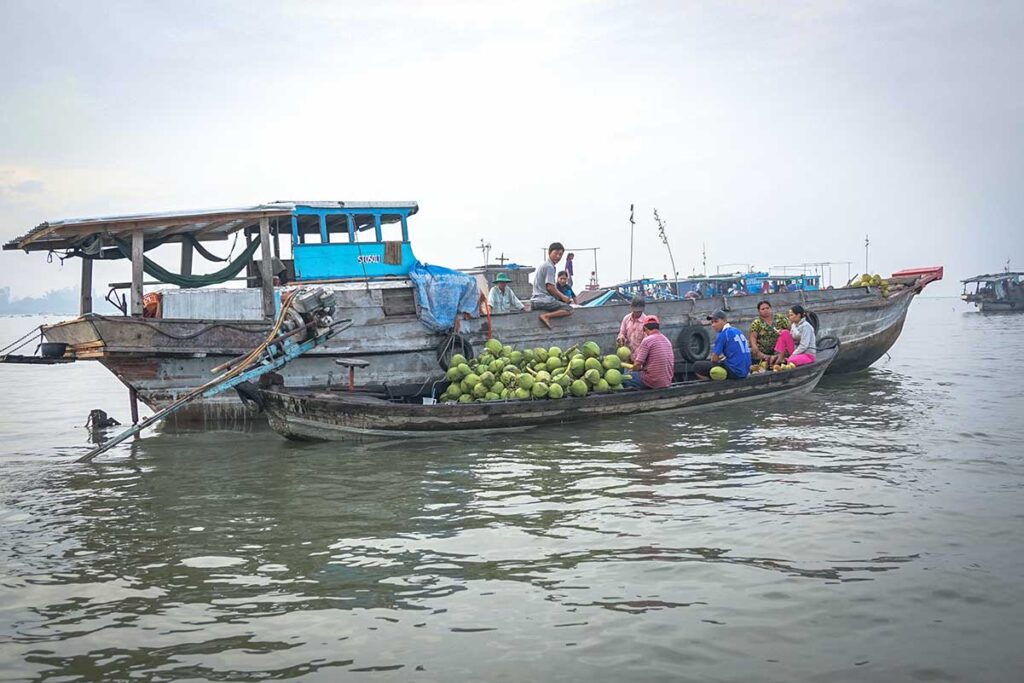What is the Mekong Delta?
The Mekong Delta map shows more than a single destination—it outlines one of Southeast Asia’s largest river regions, covering an immense area in southern Vietnam. Understanding its scale is key for travelers, since the Delta is spread across multiple provinces, towns, and waterways rather than being one compact place.
Not a single destination
The Mekong Delta is about the size of the Netherlands or Switzerland, making it far bigger than many travelers expect. It spans thousands of square kilometers, connected by rivers and canals that cut through a patchwork of provinces, rural villages, and small cities.
Landscape & scenery

This region is defined by water: a maze of rivers, canals, and wetlands shaped by the Mekong River before it reaches the sea. The landscape includes floating markets, mangrove forests, bird sanctuaries, rice paddies, and fruit orchards. Seasonal floods and water levels influence everything from farming cycles to daily transportation.
Local life
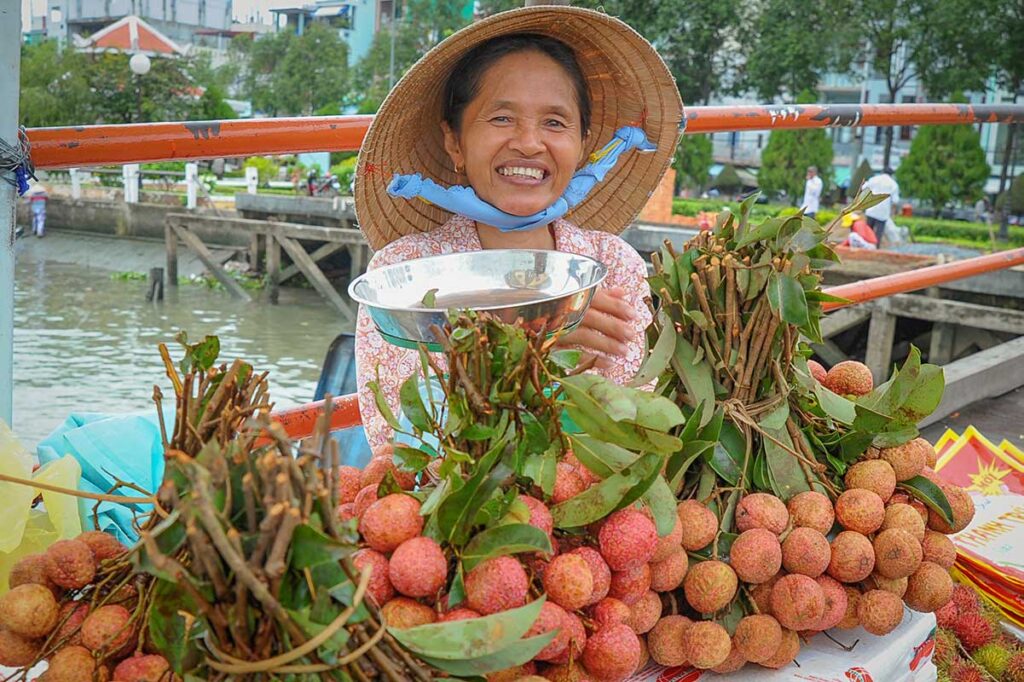
Life in the Delta revolves around the waterways. Boats double as homes, markets, and transport, while orchards and aquaculture farms line the riverbanks. Traditional craft villages, rice farming, and small-scale trading continue to define the culture here, offering a vivid glimpse into Vietnam’s agricultural heartland.
The provinces of the Mekong Delta
When looking at a map of the Mekong Delta, you’ll see that it has historically been divided into 12 provinces and one centrally governed city. Each has developed its own identity, highlights, and local character, so travelers still often refer to these older names when planning a trip. Since mid-2025, however, Vietnam introduced a reform that merged the 13 units of the Delta into six larger administrative provinces.
Old provinces (historical list)
When looking at old maps of the Mekong Delta, you will still see the 12 provinces and one centrally governed city that existed before 2025. Most travelers don’t navigate by province names, but these divisions shaped the Delta’s cultural and geographic identities, which is why we list them separately here. In the next section, you’ll see the updated 2025 map with the six new provinces, but first, here’s what each of the old ones was known for.
- Long An – Sitting at the edge of Ho Chi Minh City, Long An was long considered the gateway into the Mekong Delta. It is famous for its rice fields and the Láng Sen Wetland Reserve, an important habitat for migratory birds.
- Tien Giang – Home to Mỹ Tho, this province was the classic launch point for day trips from Ho Chi Minh City. It is also known for the Cái Bè Floating Market and the lush river islands that offer fruit orchards and handicraft workshops.
- Ben Tre – Nicknamed the “land of coconuts,” Bến Tre is filled with coconut groves and shaded canals. Visitors come here for boat trips, cycling, and homestays that showcase authentic rural life.
- Vinh Long – Located between two main branches of the Mekong River, Vĩnh Long is best known for its orchard islets. An Bình Islet is especially popular for homestays and peaceful countryside landscapes.
- Tra Vinh – With a large Khmer population, Trà Vinh is dotted with colorful pagodas and Buddhist cultural sites. Ba Om Pond, ringed by ancient trees, is a well-known scenic and historical spot.
- Hau Giang – Created as a separate province in 2004, Hậu Giang was one of the youngest in Vietnam. It offered a quiet rural setting, with Lung Ngọc Hoàng Nature Reserve as its best-known attraction.
- Soc Trang – Known for its strong Khmer heritage, Sóc Trăng was home to some of the Delta’s most distinctive temples. Highlights included Bat Pagoda, with its resident bat colonies, and Som Rong Pagoda with its giant reclining Buddha.
- Bac Lieu – This coastal province combined agriculture with cultural heritage and renewable energy. It was famous for the Bạc Liêu Wind Farm, the Bird Sanctuary, and the mansion of the “Prince of Bạc Liêu.”
- Ca Mau – At the very southern tip of Vietnam, Cà Mau marked the end of the Mekong River’s journey to the sea. Its main attractions were Mũi Cà Mau (Cape Cà Mau), U Minh Hạ National Park, and vast mangrove forests.
- Dong Thap – Known as the heart of wetland biodiversity in the Delta, Đồng Tháp was home to Tràm Chim National Park and the Sa Đéc Flower Village. It was also part of the Đồng Tháp Mười (Plain of Reeds), an important natural area.
- An Giang – An Giang was celebrated for its cultural diversity and scenic landscapes. Travelers visited Châu Đốc, the pilgrimage site of Bà Chúa Xứ Temple, and the flooded forests of Trà Sư.
- Kien Giang – A large and varied province, Kiên Giang included Phú Quốc Island, Hà Tiên’s beaches, and U Minh Thượng National Park. Its mix of islands, coastline, and inland rivers made it one of the Delta’s most diverse areas.
- Can Tho – The only centrally governed city in the Delta, Cần Thơ served as the economic and cultural hub of the region. It was best known for Cái Răng Floating Market, Ninh Kiều Wharf, and its lively riverside atmosphere.
New provinces (since 2025 reform)
In mid-2025, Vietnam carried out a nationwide reform that reduced the number of provinces in Vietnam by merging smaller ones into larger administrative units. The Mekong Delta, which traditionally had 12 provinces and one centrally governed city, was reorganized into six new provinces. For travelers, this means that place names on official maps and government documents may look different, but the towns, cultural sites, and natural highlights remain exactly where they were.
| New province | Merged from |
|---|---|
| Tây Ninh | Tây Ninh + Long An |
| Cần Thơ (city) | Cần Thơ + Sóc Trăng + Hậu Giang |
| Vĩnh Long | Bến Tre + Vĩnh Long + Trà Vinh |
| Đồng Tháp | Tiền Giang + Đồng Tháp |
| Cà Mau | Bạc Liêu + Cà Mau |
| An Giang | An Giang + Kiên Giang |
This change affects only the administrative structure. For travel purposes, the main destinations and experiences are unchanged—you’ll still visit Mỹ Tho in Tiền Giang, coconut groves in Bến Tre, or floating markets in Cần Thơ, but they may now be officially listed under the new provincial names.
Map of Mekong Delta with the best sights
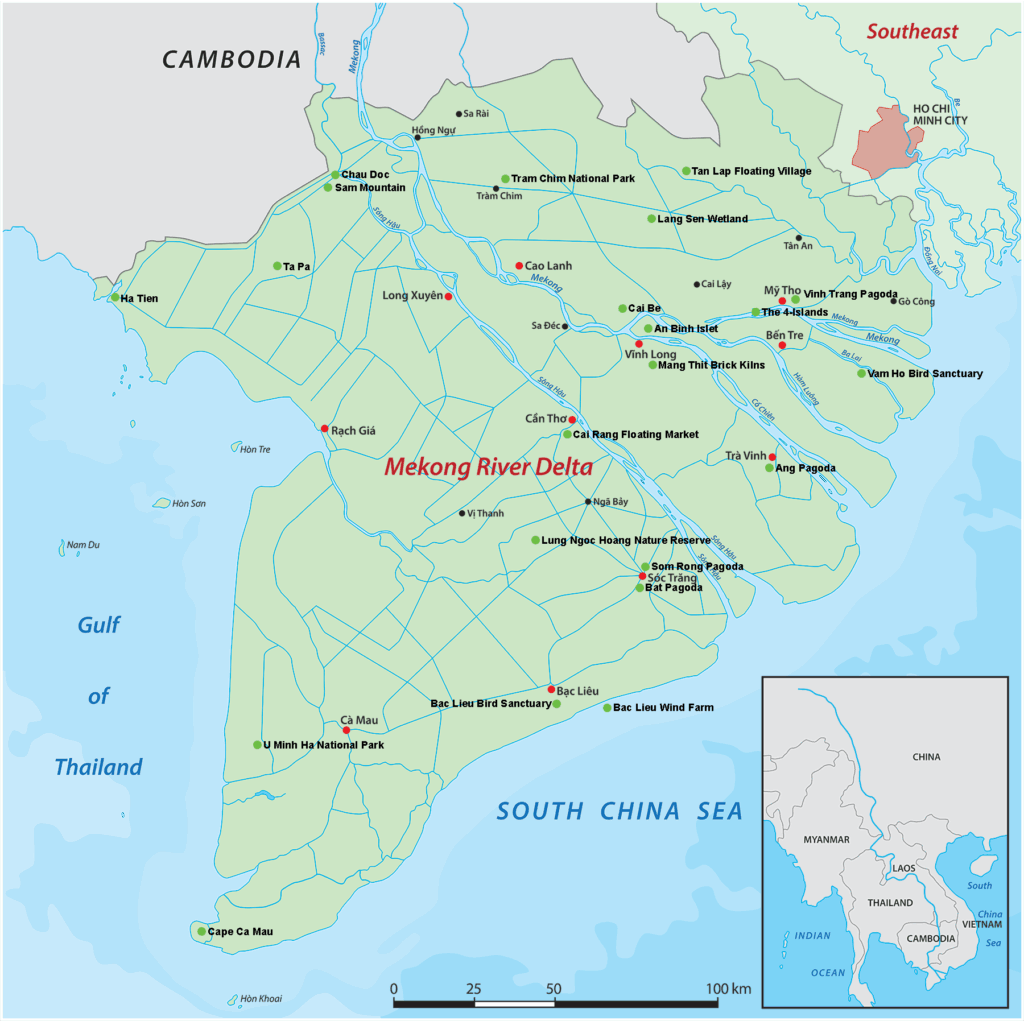
This map of the Mekong Delta highlights the six new provinces created after the 2025 reform and marks the biggest destinations that travelers should know about. These are not activities or small temples, but major towns, natural sites, and landmarks that define the region. Below, each province is listed with four of its most important highlights that can be pinned directly on the map.
1. Tay Ninh (including Long An)
Cao Dai Holy See (Tay Ninh)
The Cao Dai Holy See in Tay Ninh is the spiritual center of Caodaism, a religion unique to Vietnam. The temple complex, with its colorful architecture and elaborate ceremonies, is one of the most famous landmarks in southern Vietnam.
Ba Den Mountain cable car and summit
Ba Den Mountain in Tay Ninh is the highest peak in southern Vietnam and a major pilgrimage site. The modern cable car system carries visitors to the summit, where they can enjoy sweeping views and explore pagodas and shrines.
Tan Lap Floating Village (Long An wetlands)
The Tan Lap Floating Village in Long An is known for its raised walkways through flooded forests and lotus-filled wetlands. It is a popular day trip from Ho Chi Minh City for birdwatching, photography, and eco-tourism.
Lang Sen Wetland Reserve
The Lang Sen Wetland Reserve in Long An is part of the Plain of Reeds ecosystem and a key sanctuary for migratory birds. Seasonal flooding turns the area into an important stopover for wildlife, making it a must-visit for nature lovers.
2. Can Tho (including Sóc Trăng & Hau Giang)
Can Tho City (Can Tho)
Can Tho City is the economic and cultural hub of the Mekong Delta. Beyond the Cai Rang Floating Market, Can Tho offers Ninh Kieu Wharf, ornate pagodas and monasteries, and historic houses that reflect its rich past.
Cai Rang Floating Market (Can Tho)
The Cai Rang Floating Market in Can Tho is the most famous floating market in the Mekong Delta and a symbol of its river trade. At dawn, boats loaded with fruit and produce gather here, creating one of the region’s most iconic sights.
Som Rong Pagoda and reclining Buddha (Soc Trang)
Som Rong Pagoda in Soc Trang is best known for its 63-meter reclining Buddha statue, one of the largest in Vietnam. The pagoda combines Khmer-style architecture with striking colors, making it a standout attraction in the Mekong Delta.
Bat Pagoda (Soc Trang)
The Bat Pagoda in Soc Trang, also known as Chua Doi, is a Khmer Buddhist temple where large bat colonies roost in the surrounding trees. This unusual combination of wildlife and ornate temple design makes Bat Pagoda a unique stop.
Lung Ngoc Hoang Nature Reserve (Hau Giang)
The Lung Ngoc Hoang Nature Reserve in Hau Giang is a vast wetland area that protects rare birds, fish, and swamp forests. Exploring Lung Ngoc Hoang by boat gives travelers a chance to see one of the last untouched ecosystems in the central Mekong Delta.
3. Vinh Long (including Ben Tre and Tra Vinh)
An Binh Islet (Vinh Long)
An Binh Islet in Vinh Long is one of the most popular homestay areas in the Mekong Delta. Surrounded by orchards and small canals, An Binh offers visitors a chance to experience rural hospitality while cycling or boating through the countryside.
Ben Tre (Ben Tre Province)
Ben Tre is often called the “land of coconuts,” with quiet canals shaded by palm trees. The town of Ben Tre, together with the surrounding orchards and coconut workshops, makes it one of the most authentic stops in the Delta.
Vam Ho Bird Sanctuary (Ben Tre)
The Vam Ho Bird Sanctuary in Ben Tre protects thousands of storks, herons, and other waterbirds. Wooden walkways and boat rides take visitors deep into the mangroves, making Vam Ho a highlight for nature and bird lovers.
Mang Thit Brick Kilns (Vinh Long)
The Mang Thit Brick Kilns in Vinh Long form a striking riverside complex of hundreds of old brick ovens. Once the heart of local industry, the area is now an atmospheric site where visitors can explore crumbling kilns and learn about traditional brick-making.
Ang Pagoda (Tra Vinh)
Ang Pagoda in Tra Vinh is one of the most important Khmer temples in southern Vietnam. With its striking architecture, colorful murals, and peaceful setting, Ang Pagoda is a key cultural landmark of the province.
4. Dong Thap (including Tien Giang)
My Tho (Tien Giang)
My Tho is the largest city of Tien Giang Province and the closest major Delta town to Ho Chi Minh City. My Tho is famous for day trips to the river islands, where visitors enjoy boat rides, fruit orchards, and traditional music.
Tram Chim National Park (Dong Thap)
Tram Chim National Park in Dong Thap is one of Vietnam’s most important wetlands and a UNESCO-recognized Ramsar site. It is best known for the Sarus crane, which can be spotted during the dry season from late December to April.
Sa Dec (Dong Thap)
Sa Dec in Dong Thap is a riverside city with a mix of colonial history and vibrant horticulture. Highlights include the Sa Dec Flower Village, French-era houses such as the Huynh Thuy Le Ancient House, and everyday river life.
Cai Be (Tien Giang)
Cai Be in Tien Giang is a riverside town best known for its canal scenery, orchards, and craft villages. While the Cai Be Floating Market has become smaller in recent years, Cai Be remains a charming base for exploring fruit gardens and local life along the Mekong.
Vinh Trang Pagoda (Tien Giang)
Vinh Trang Pagoda in Tien Giang is the most famous Buddhist temple in the province, blending Vietnamese, Khmer, and Chinese styles. Its giant Buddha statues and ornate architecture make it a must-see stop near My Tho.
5. Ca Mau (including Bac Lieu)
Mui Ca Mau / Cape Ca Mau
Mui Ca Mau, or Cape Ca Mau, marks the southernmost point of Vietnam, where the Mekong River meets the sea. The cape features mangrove forests, a symbolic GPS marker, and viewing towers over the wetlands.
U Minh Ha National Park (Ca Mau)
The U Minh Ha National Park in Ca Mau is a vast mangrove and cajuput forest teeming with wildlife. Boat rides through the flooded forest give visitors a look at one of Vietnam’s richest ecosystems.
Bac Lieu Wind Farm
The Bac Lieu Wind Farm has become an iconic image of the Mekong Delta with its giant turbines stretching into the sea. The site offers dramatic views at sunrise and sunset and represents Vietnam’s shift toward renewable energy.
Bac Lieu Bird Sanctuary
The Bac Lieu Bird Sanctuary is home to thousands of storks, herons, and migratory birds. Elevated walkways and observation towers allow visitors to watch the flocks in their natural wetland environment.
6. An Giang (including Kien Giang)
Phu Quoc Island (Kien Giang)
Phu Quoc Island in Kien Giang is Vietnam’s largest island and a top beach destination. Known for its white sand beaches, coral reefs, and the world’s longest sea cable car, Phu Quoc is the Delta’s most famous resort area.
Chau Doc (An Giang)
Chau Doc in An Giang is a lively border town on the Hau River, known for its floating houses and nearby Cham villages. Located at the foot of Sam Mountain, Chau Doc is also the starting point for boat connections to Cambodia, making it both a cultural hub and a practical travel gateway.
Tra Su Cajeput Forest (An Giang)
The Tra Su Cajeput Forest in An Giang is a flooded mangrove forest best explored by sampan boat. Covered in green duckweed and filled with birdlife, Tra Su is one of the most photogenic natural sites in the Mekong Delta.
Sam Mountain (An Giang)
Sam Mountain in An Giang rises from the flat Mekong plains near Chau Doc and is one of the most important pilgrimage sites in southern Vietnam. The mountain is dotted with temples and pagodas, and the summit offers panoramic views of rice fields stretching into Cambodia.
Ta Pa (An Giang)
Ta Pa in An Giang is a small mountain near Tri Ton, popular for its viewpoint over rice paddies and seasonal water-filled fields. The area around Ta Pa is also home to Khmer temples and villages, adding cultural interest to the scenic landscape.
Ha Tien coastal caves and beaches (Kien Giang)
The Ha Tien area in Kien Giang is famous for its coastal scenery, including limestone caves, pagodas, and sandy beaches. Ha Tien also serves as a gateway to the Cambodian border and nearby islands, like Phu Quoc.
Long Xuyen (An Giang)
Long Xuyen in An Giang is a bustling provincial capital with one of the Delta’s most authentic floating markets. The city is also a gateway to rural areas along the Hau River, where traditional lifestyles remain strong.
Interactive map of Mekong Delta with major highlights
This interactive map of the Mekong Delta goes beyond the main destinations by showing dozens of smaller points of interest across the region. In addition to the major towns and landmarks, it includes craft villages, lesser-known pagodas, stork gardens, ferry piers, bus stations, and tiny river islets, giving you a more detailed view of how to plan your journey.
What Mekong Delta region to pick?
By looking at the map of the Mekong Delta, it becomes clear just how large the region really is and how spread out the destinations are. If you only have time for a day trip or even a quick two-day visit, you will only see a fraction of the Delta, so it’s important to decide which area fits your interests best.
Popular day-trip bases from Ho Chi Minh City
My Tho (Tien Giang) – My Tho is the most common day-trip base from Ho Chi Minh City, thanks to its short travel time and easy access to the river. However, My Tho can feel crowded and commercial, with many tours following the same circuit.
Ben Tre – Ben Tre is known for its coconut groves and calmer canals. The atmosphere is often more authentic than My Tho, but the experience still depends heavily on the quality of the tour operator.
Better for multi-day trips
Can Tho – Can Tho is the largest city in the Delta and the best base for visiting floating markets like Cai Rang. The city also offers a mix of riverfront promenades, museums, and nearby rural excursions.
Chau Doc (An Giang) – Chau Doc combines river culture with religious sites and natural landscapes. From here, you can visit Sam Mountain, explore Cham villages, take boat trips through floating houses, or continue by boat into Cambodia.
Cai Be (Tien Giang) – Cai Be is smaller and quieter than Can Tho or My Tho, with countryside lodges and canal-side homestays. Staying overnight in Cai Be gives travelers a closer look at daily life in the orchards and along the waterways.
Getting around the Mekong Delta
Looking at a map of the Mekong Delta, it becomes clear that distances between destinations are larger than many travelers expect. While express highways link Ho Chi Minh City with the Delta, travel within the region is often slower, relying on local roads, ferries, and waterways. Choosing the right way to get around depends on how far you plan to travel and what kind of experience you want.
Boat
Boats are the most iconic way to explore the Delta, whether for floating markets, small islets, or wetland reserves. From large river ferries to small sampans, boat trips are essential for reaching places that roads cannot.
Taxis and ride-hailing
In larger cities like Can Tho, taxis and apps such as Grab are convenient for short trips. They are the easiest option for reaching wharfs, bus stations, and restaurants within urban areas.
Private car with driver
A private car with driver is the best choice for covering longer distances between destinations. This is especially useful for routes like Can Tho to Rach Gia ferry port, or when connecting multiple provinces in one trip.
Cycling
Cycling is a peaceful way to explore the Mekong Delta’s countryside, especially around Ben Tre, Vinh Long, and Cai Be. Narrow village paths and shaded canal roads make cycling one of the most rewarding local experiences.
Scooter rental
Renting a scooter offers flexibility, but it is best for experienced riders. Rural roads can be narrow and weather conditions change quickly, so caution is essential when exploring the Delta by motorbike.
